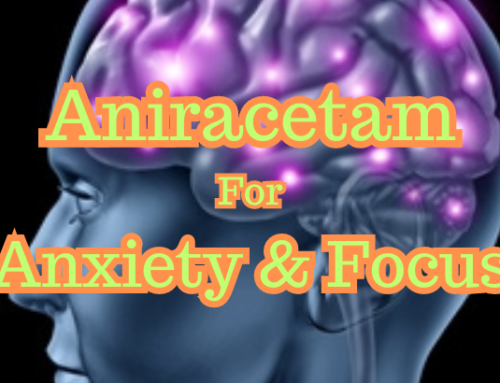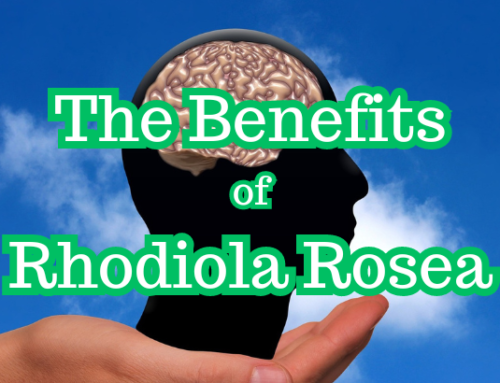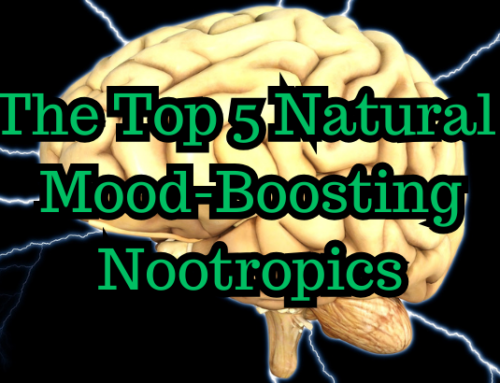With modern science we can create all kinds of amazing substances in the laboratory. But sometimes the best and most effective substances are found in nature.
One of these amazing substances is mucuna pruriens. It's a tropic bean that grows naturally in parts of Africa and Asia. And it has a number of powerful nootropic properties.
The reason that mucuna pruriens is so powerful is because it contains a large amount of levodopa (aka L-dopa), which is a well-known substance with tons of medicinal properties. L-dopa is actually a prescription drug in the United States and abroad. It's used to treat Parkinson's Disease, Restless Leg Syndrome, and several other conditions.
When taken by healthy individuals, mucuna can significantly improve mood, motivation, and reduce anxiety. It may also increase testosterone and growth hormone (HGH) levels. Because of this, mucuna pruriens is popular in both nootropic and bodybuilding communities.
In this science-backed article, we're going to take an in-depth look at how mucuna pruriens works, its benefits, potential side effects, effective dosage, and more. But first, let's see what exactly mucuna is.
What Is Mucuna Pruriens?
Mucuna pruriens is a tropic legume that grows naturally in several parts of Africa and Asia. It goes by many, many names: velvet bean, cowitch, cowage, lacuna bean, Lyon bean, Florida velvet beat, Yokohama velvet bean, Muritius velvet bean, and Bengal velvet bean1 – to name just a few. But out of all the different names there are for mucuna pruriens, it's often simply referred to as mucuna.
Mucuna has been used for centuries to treat a number of different ailments in traditional medicine. It's been used to treat everything from snake bites to Parkinson's disease.2 This interesting bean contains a number of different substances that are known to have physiological effects. By far the most significant of these substances is L-dopa. We'll get into what that is in the next section.
Mucuna also contains a number of other bioactive substances, but in much smaller amounts. These include serotonin, 5-HTP, bufotenine, dimethyltryptamine (DMT), nicotine, beta carboline, and 5-MeO-DMT, among others.3 It is unlikely that these have any noticeable effect, though, as they are only found in very small quantities.

A mucuna flower
In recent years, mucuna has become popular in nootropic and bodybuilding/fitness communities. For many users, it provides a noticeable improvement in mood, increased motivation and energy, and a reduction in anxiety.
This makes mucuna a great standalone nootropic, great as part of a nootropic stack, or great as as part of a preworkout supplement. There is even some research to suggest that it may increase testosterone and HGH levels in men.4 For older guys, bodybuilders, and fitness enthusiasts in general, this is a very welcome added benefit.
Many of mucuna's nootropic and general-health benefits can be attributed to one particular substance that it contains: L-dopa. Let's take an in-depth look at what exactly L-dopa is.
What Is L-Dopa?
L-dopa is the substance in mucuna pruriens that is likely responsible for most of its nootropic properties. Improved mood, increased motivation, and reduced anxiety are all well-known potential effects of taking l-dopa.5

Dopamine is a neurotransmitter that is known to play a crucial role in motivation, attention, libido, mood, pleasure, and anxiety.7 Low dopamine levels are correlated with depression, anxiety, low sex drive, lack of pleasure (anhedonia), and lack of motivation.8
As its direct precursor, taking L-dopa increases dopamine levels in the brain. Unlike dopamine itself, L-dopa is able to cross the Blood-Brain Barrier (BBB).9 The BBB prevents most substances from getting into the brain, but not L-dopa. It's able to cross the BBB where it is converted into dopamine.
L-dopa is used as a prescription medication in the United States and much of the world as a treatment for Parkinson's Disease. When used for Parkinson's, L-dopa can significantly reduce the symptoms of this horrible degenerative disorder.10 Parkinson's Disease causes low dopamine levels and L-dopa helps to increase them.
 Since mucuna contains a significant amount of L-dopa, researchers have tried using it to treat Parkinson's Disease. A 2017 found that, not only did mucuna work just as well as L-dopa at treating the symptoms of this terrible disease, it had less side effects.11
Since mucuna contains a significant amount of L-dopa, researchers have tried using it to treat Parkinson's Disease. A 2017 found that, not only did mucuna work just as well as L-dopa at treating the symptoms of this terrible disease, it had less side effects.11
People who take L-dopa and people who take mucuna often report the same things: increased motivation, improved mood, and reduced anxiety. This isn't surprising, given the way they work and their effect on dopamine in the brain. Now that we've taken a look at mucuna and the bioactive amino acid it contains, L-dopa, let's take a peek at mucuna's benefits.
Benefits of Mucuna Pruriens
Unfortunately, there haven't been many studies done on mucuna's nootropic properties. However, there is an abundance of anecdotal reports from all over the world that describe the following benefits of taking mucuna:
Improved Mood/Increase Sense of Well-Being – There are tons of reports around the internet of this. Mucuna users are reporting an improvement in mood and of overall well-being. This has also been noted in at least one scientific study.12 Published in 2010, this study found that participants taking mucuna experienced a boost in mood and an increase in overall sense of well-being.
 Decreased Anxiety – This is another effect that is commonly reported with mucuna supplementation. While there haven't been any studies that directly look at the effect mucuna has on anxiety, there are numerous anecdotal reports. And a 2020 study found that mucuna had an anxiolytic (anxiety-reducing) and antidepressant effect in rats.14
Decreased Anxiety – This is another effect that is commonly reported with mucuna supplementation. While there haven't been any studies that directly look at the effect mucuna has on anxiety, there are numerous anecdotal reports. And a 2020 study found that mucuna had an anxiolytic (anxiety-reducing) and antidepressant effect in rats.14
Increased Motivation – This is another effect that is widely reported with mucuna use. Again, there aren't any studies that explore this directly. However, there are numerous case studies of Parkinson's patients who report increased motivation and goal-oriented behavior after starting L-dopa. And given the way mucuna affects dopamine levels, it isn't surprising that it could increase motivation.
Increased Testosterone and Growth Hormone (HGH) – There are 2 studies that showed mucuna supplementation increased levels of testosterone, luteinizing hormone (LH), and growth hormone (HGH), while decreasing levels of prolactin and follicle-stimulating hormone (FSH) in infertile men.412 It hasn't yet been studied if this also occurs in healthy men, but a lot of mucuna users claim that it does.
Increased Dopamine – As mentioned above, dopamine is a chemical in the brain that plays a role in motivation, mood, focus, anxiety, pleasure, goal-oriented behavior, and libido. Taking mucuna has been shown to increase plasma dopamine concentrations. It is thought that many (if not most) of mucuna's nootropic benefits are because of its affect on dopamine in the brain.
Mucuna Side-Effects
Mucuna seems to be very well-tolerated when taken at recommended dosages and even at very high ones. One large double-blind study showed that mucuna had no serious side-effects at a dosage of 30 grams for 20 weeks.2
 Since mucuna pruriens contains L-dopa, the side-effects of L-dopa are theoretically possible. However, studies comparing the two indicate that mucuna seems to have fewer side effects than L-dopa.11 This may be due to mucuna containing other substances in addition to L-dopa, which may mitigate certain side-effects.
Since mucuna pruriens contains L-dopa, the side-effects of L-dopa are theoretically possible. However, studies comparing the two indicate that mucuna seems to have fewer side effects than L-dopa.11 This may be due to mucuna containing other substances in addition to L-dopa, which may mitigate certain side-effects.
Some users report nausea, gastrointestinal distress, and upset stomach after taking mucuna. This can usually be eliminated by taking mucuna with food.
If you are taking an MAOI (typically prescribed for severe depression) or other psychiatric drugs that affect dopamine levels, you should talk to your prescriber before taking mucuna. In fact, it's always a good idea to talk to a licensed healthcare professional before starting or stopping any supplement, drug, plant, exercise routine, or making any major lifestyle changes.
Mucuna Pruriens Dosage
Like all drugs and supplements, you want to use the lowest effective dosage. The reason for this is to minimize the likelihood of side effects while getting all of the benefits.

For a mucuna supplement that contains 15% L-dopa like the capsules from Pure Nootropics, a dosage of 800 milligrams (mg) a day seems to work well for most people. However, some people require a higher dosage to experience mucuna's nootropic benefits. If 800 mg a day doesn't do anything for you after a couple weeks, you can try gradually increasing the dosage.
While some users notice mucuna's nootropic effects after the first dose, it can take several weeks of daily supplementation to experience the benefits of supplementing with mucuna.
Mucuna is probably absorbed best when taken on an empty stomach. However, if you experience nausea and upset stomach, you should take mucuna with food.
Lastly, some mucuna users find it works better when taken with epigallocatechin gallate (EGCG). EGCG, commonly found in green tea, is a decarboxylase inhibitor and slows the breakdown of dopamine in the body.13 By taking EGCG with mucuna, it helps to keep more dopamine in your brain. This can increase the positive effects of mucuna and reduce the likelihood off side effects.
Conclusion
It should come as no surprise that mucuna pruriens can be found in the arsenal of many nootropic users. It can be highly effective by itself or in combination with other nootropics.
Improved mood, decreased anxiety, and increased motivation are among the benefits of this fascinating bean. And it may increase testosterone and growth-hormone levels in men, too. Nootropics users and fitness enthusiasts from all over the world have been reporting these positive effects and more.
Mucuna can be a great nootropic for increasing motivation, boosting mood, and reducing anxiety. To learn about other nootropics with similar benefits, make sure to sign up for the Nootropics Zone newsletter (below) and by check out the following articles:
Best Nootropics For Motivation
To learn more about nootropics, sign up for the Nootropics Zone newsletter. You'll get the free gift, The Ultimate Nootropics Quick Reference Guide.
References
1Mucuna pruriens. (n.d.). U.S. National Plant Germplasm System. Retrieved June 5, 2020 from https://npgsweb.ars-grin.gov/gringlobal/taxonomydetail.aspx?id=24652
2Katzenschlager, R., Evans, A., Manson, A., Patsalos, P., Ratnaraj, N., Watt, H., Timmermann, L., Van der Giessen, R., & Lees, A. (2004). Mucuna pruriens in Parkinson’s disease: a double blind clinical and pharmacological study. Journal of Neurology, Neurosurgery, and Psychiatry, 75(12):1672-7.
3Mucuna pruriens. (n.d.). Phytochemical and Ethnobotanical Databases. Agricultural Research Service. Retrieved June 5, 2020 from https://web.archive.org/web/20041119073349/http://sun.ars-grin.gov:8080/npgspub/xsql/duke/plantdisp.xsql?taxon=644
4Gupta, A., Mahdi, A., Ahmad, M., Shukla, K., Bansal, N., Jaiswer, S., & Shankhwar, S. (2011). A proton NMR study of the effect of mucuna pruriens on seminal plasma metabolites of infertile males. Journal of Pharmaceutical and Biomedical Analysis, 55(5):1060-6.
5Murphy, D. (1973). Mental effects of l-dopa. Annual Review of Medicine, 24:209-16.
6L-DOPA. (n.d.). Wikipedia. Retrieved June 5, 2020 from https://en.wikipedia.org/wiki/L-DOPA
7Dopamine. (n.d.). Wikipedia. Retrieved June 5, 2020 from https://en.wikipedia.org/wiki/Dopamine
8Belujon, P., & Grace, A. (2017). Dopamine system dysregulation in major depressive disorders. International Journal of Neuropsychopharmacology, 20(12):1036-46.
9Hardebo, J., & Owman, C. (1980). Barrier mechanisms for neurotransmitter monoamines and their precursors at the blood-brain interface. Annals of Neurology, 8(1):1-11.
10Hofmann, W., & Ryan, R. (1970). A controlled study of l-dopa in Parkinson's Disease. Western Journal of Medicine, 112(2):9-14.
11Cilia, R., Laguna, J., Cassani, E., Cereda, E., et al. (2017). Mucuna pruriens in Parkinson disease: a double-blind, randomized, controlled, crossover study. Neurology, 89(5):432-8.
12Shukla, K., Mahdi, A., Ahmad, M., Jaiswar, S., Shankwar, S., & Tiwari, S. (2010). Mucuna pruriens reduces stress and improves the quality of semen in infertile men. Evidence Based Complementary and Alternative Medicine, 7(1):137-44.
13Bertoldi, M., Gonsalvi, M., & Voltattorni, C. (2001). Green tea polyphenols: novel irreversible inhibitors of dopa decarboxylase. Biochemical and Biophysical Research Communications, 284(1):90-3.
14Tavares, R., Araújo de Vasconcelos, M., Letícia da Veiga Dutra, M., D'Oliveira, A., et al. (2020). Mucuna pruriens administration minimizes neuroinflammation and shows anxiolytic, antidepressant, and slimming effects in obese rats. Molecules, 25(23):5559.
[Originally published February 7, 2016. Updated January 13, 2023.]







Leave a Reply